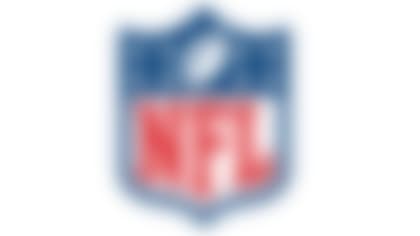Whoa, that was a close one.
Leave it to some penny pinching Minnesotans to make a couple of billionaires sweat it out. If Zygi and Mark Wilf had known it was going to be this hard to get a new stadium built in Minneapolis, they might have gone looking for some other taxpayer-funded trough to guzzle at.
They're going to get their new stadium, though, and what a place it should be. A billion-dollar palace downtown, smack on the same spot the Vikings play today, and loaded with the kind of amenities that make owning an NFL team so much fun.
The best part of it is they'll get it for next to nothing.
Sure, $477 million seems like a lot of money, even for billionaires. By the time the Wilfs get done selling stadium naming rights and the dreaded personal seat licenses, though, they may not even need the $200 million loan the NFL has promised to help get it done.
No wonder team executives were jubilant this week when Minnesota lawmakers voted to approve the deal, even though they added $50 million to the team's share of the cost to keep angry taxpayers from attacking the state capitol with pitchforks.
It was a classic shakedown, the kind the NFL is particularly good at. After years of thinly veiled threats about the Vikings possibly moving to Los Angeles if they didn't get a proper new stadium, Commissioner Roger Goodell put the hammer down last month with a visit to state legislators that jumpstarted what had been a stalled debate over how much taxpayers should cough up for the team.
The final tally was some $500 million, funded partly by a scheme to boost gambling revenues across the state. The new stadium will be built on the site of the Metrodome, just a few blocks away from Target Field, which opened in 2010 with taxpayers picking up $350 million of the original $480 million price tag.
You might think Minnesotans are just rubes who got conned into spending nearly a billion dollars on stadiums, but they're hardly alone. Wealthy owners have been stealing from taxpayers ever since they figured out that communities with major sports teams would pay good money for the right to keep them.
The pitch is that it's good for the town, good for the local economy. What it mainly does, though, is make owners even richer with streams of new revenues from luxury box sales and premium seating charges they could only dream of in their old digs. That's particularly true for the Vikings, who were ranked 28th out of 32 teams in valuation by Forbes last year at $796 million.
The Wilfs didn't have to look far to see what a new stadium can do. The Indianapolis Colts, who were ranked 24th among NFL teams by Forbes in 2005 are now 11th, thanks to a $720 million stadium they paid only $100 million for. The team's value has increased from $715 million to $1.057 billion in that period alone.
Indianapolis did get a Super Bowl out of the deal, small consolation for residents who pay taxes for Lucas Oil Stadium every time they buy something. And Minneapolis will likely get one, too, because that's how the NFL rewards cities that play ball.
Indeed, they're already talking Super Bowl in San Francisco, even though the new stadium for the 49ers is being built 40 miles away in Santa Clara. Money trumps geography, and the residents of Santa Clara agreed to contribute $114 million for a new stadium and sign off on an $850 million bank loan even though the city is so financially strapped that it had to borrow $6 million from the 49ers to do site preparation work.
The worst stadium deal ever, though, may be in St. Louis, where they built a sparkling new dome in 1995 to lure the Rams from Los Angeles. The city, county and state together spend $24 million a year on debt for the stadium, but the Rams have a sweetheart lease that allows the team to leave if the dome isn't among the top 25 percent of NFL stadiums.
It isn't, of course, and that means taxpayers will be digging even deeper to keep the Rams. The team has already rejected a plan that would include $60 million in public money for a new scoreboard, more club seating and better lighting, and there's no doubt the final tab will be much more.
Compared to the dome in St. Louis, the Metrodome - which opened in 1982 - is an aged relic, the last stadium built in the multipurpose use era. Still, it wasn't a bad place to play football, and they did spend $20 million on a new roof for it last year after the old one collapsed in a snowstorm.
But the new stadium will have suites - and lots of them. It will have premium seating, and every amenity possible to separate fans from their money.
The Wilfs will do well on their investment, no doubt. They should thank the good citizens of Minnesota for picking up the tab.
Tim Dahlberg is a national sports columnist for The Associated Press. Write to him at tdahlberg(at)ap.org



